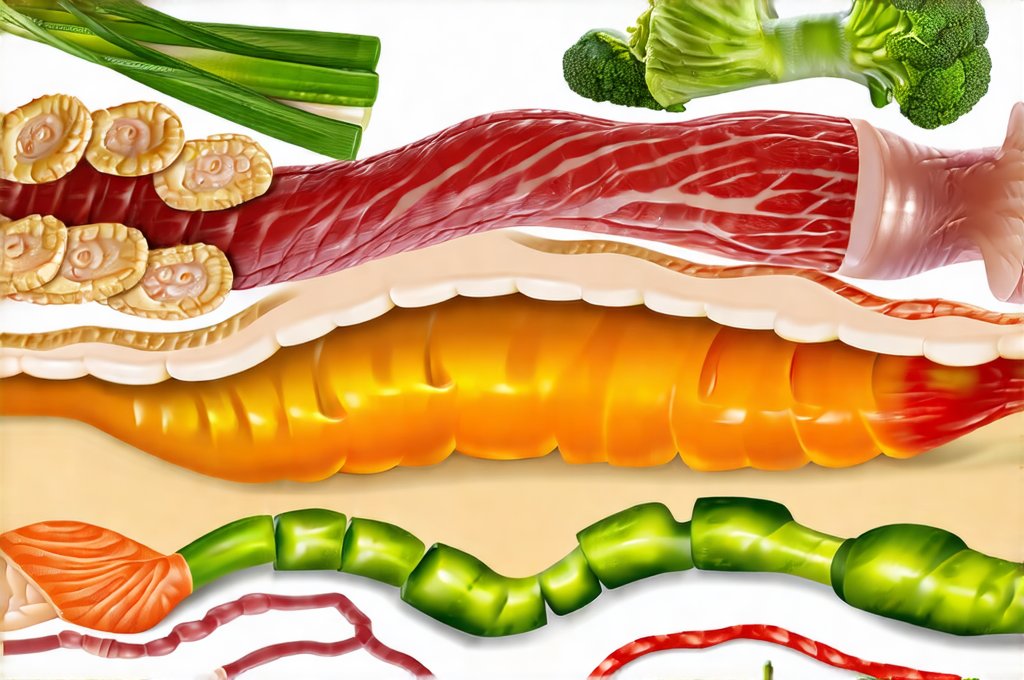The gut is often described as our ‘second brain’, and for good reason. It’s not merely a digestive tract; it’s a complex ecosystem teeming with trillions of microorganisms – bacteria, viruses, fungi, and archaea – collectively known as the gut microbiome. This microbial community profoundly impacts everything from digestion and nutrient absorption to immune function, mental health, and even chronic disease risk. However, this delicate balance is easily disrupted by modern dietary habits characterized by rapid eating, food combinations that overload digestive capacity, and a lack of diverse nutrients. Food conflict arises when different foods require vastly different digestive processes, leading to fermentation, gas, bloating, nutrient malabsorption, and ultimately, systemic inflammation. Understanding how to strategically layer meals – consciously sequencing the order in which we eat foods – is a powerful tool for optimizing gut health and minimizing these adverse effects. You can learn more about gut microbiome role here.
This isn’t about restrictive dieting or eliminating food groups; it’s about intelligent eating. It acknowledges that our digestive system works most efficiently when presented with foods in a logical sequence, allowing each component to be processed optimally without overwhelming the system. The concept builds on principles of food combining, but moves beyond rigid rules and focuses on practical, adaptable strategies for daily life. By prioritizing digestion and minimizing gut stress, we can unlock greater energy levels, improve nutrient uptake, and enhance overall well-being. This approach emphasizes mindful eating, recognizing that how we eat is just as important as what we eat. Understanding gut health reactions can help tailor your dietary strategy.
The Foundation: Understanding Digestive Hierarchy
Our digestive system isn’t a one-size-fits-all processing plant. Different foods require different environments to break down effectively. Carbohydrates begin digestion in the mouth with enzymes like amylase, while proteins need an acidic environment in the stomach, and fats require bile from the gallbladder and pancreatic lipase for efficient absorption. When we haphazardly combine foods requiring conflicting digestive conditions, it can create a backlog and lead to incomplete digestion. This undigested food then becomes fuel for undesirable bacteria in the gut, leading to fermentation and its unpleasant consequences.
The key is recognizing this digestive hierarchy. Generally speaking: 1) Fluids are digested first and fastest; 2) Fruits digest quickly and easily; 3) Vegetables follow, with leafy greens being easier than starchy vegetables; 4) Proteins take longer to digest; and 5) Fats take the longest. Layering meals strategically means starting with the easiest-to-digest foods and progressing to the more complex ones. This allows each food group to be processed appropriately without interfering with others, minimizing gut distress and maximizing nutrient absorption. It’s about respecting the natural order of digestion and working with your body rather than against it. You might find it helpful to explore foods that restore pH balance to support this process.
Strategic meal layering isn’t about eliminating combinations entirely – a balanced diet includes variety. Instead, it’s about understanding how to minimize conflict when combining foods that might traditionally cause issues. For example, pairing fruit with protein is often discouraged in strict food combining theories, but strategically eating the fruit before the protein allows for optimal digestion of the fruit and reduces the chance of fermentation. Learning how to identify calming foods can refine your choices.
The Power of Front-Loading Digestion
“Front-loading digestion” refers to beginning your meal with foods that require less digestive effort. This sets the stage for efficient processing throughout the rest of the meal. A practical application of this principle is starting with a large salad or a glass of water before proceeding to the main course. This prepares the stomach and intestines, signaling the body to produce necessary enzymes and acids in advance.
- Begin with hydrating fluids like water, herbal tea, or diluted lemon juice.
- Follow with low-fiber fruits (berries, melon) – these are easily digested and provide quick energy.
- Then move onto non-starchy vegetables (leafy greens, cucumber, peppers) which offer fiber and nutrients without overburdening the digestive system.
This initial phase effectively “primes” the digestive system, creating a more favorable environment for subsequent food groups. It also helps to reduce overall eating volume, promoting satiety and preventing overeating. It’s a simple yet powerful technique that can significantly improve digestion and gut comfort. The focus is on starting with what your body readily accepts before introducing foods requiring more intensive processing. Consider small choices for gut peace as you integrate these habits.
Sequencing for Optimal Protein & Fat Absorption
Once the digestive system is primed with fluids, fruits, and vegetables, we move onto protein and fats. Here’s where strategic layering becomes even more crucial. Proteins require a significant amount of hydrochloric acid in the stomach to break down effectively. Fats, on the other hand, rely on bile from the gallbladder and pancreatic lipase for emulsification and absorption. Combining large amounts of protein and fat simultaneously can overwhelm these processes, leading to incomplete digestion and potential discomfort.
A recommended approach is to consume protein before significant amounts of fat. This allows the stomach to produce sufficient hydrochloric acid for protein breakdown before being hindered by the presence of fats which slow down gastric emptying. Then, smaller portions of healthy fats – avocado, nuts, seeds, olive oil – can be incorporated after the protein has begun its initial digestive phase.
- Consider pairing lean proteins with vegetables initially.
- Introduce healthy fats in moderate amounts later in the meal.
- Avoid large quantities of both protein and fat simultaneously.
This sequencing helps ensure that both protein and fats are efficiently digested and absorbed, maximizing their nutritional benefits while minimizing gut stress. Remember, it’s not about eliminating fats – they are essential for health – but rather optimizing how we consume them.
Minimizing Carbohydrate Conflict & Fermentation
Carbohydrates, particularly complex carbohydrates like starches, can be a source of digestive conflict if not handled strategically. The problem isn’t carbohydrates themselves; it’s the combination with other foods and the potential for fermentation when digestion is incomplete. When carbohydrates are combined with proteins or fats in large quantities without adequate initial preparation (front-loading), they may sit undigested in the gut, providing fuel for undesirable bacteria and leading to gas, bloating, and discomfort.
To minimize carbohydrate conflict: 1) Prioritize whole, unprocessed carbohydrates over refined sugars and processed grains; 2) Combine carbohydrates with vegetables rather than large amounts of protein or fat; 3) Chew thoroughly – saliva contains amylase, the enzyme that begins carbohydrate digestion in the mouth. For example, instead of having a burger and fries (protein/fat + complex carb), consider a sweet potato (complex carb) alongside a side salad and a small portion of grilled chicken (protein).
Furthermore, be mindful of combining large quantities of fruit with other foods. While fruits are easily digested, their rapid sugar content can disrupt the digestive process if consumed in excess or combined with slow-digesting foods like proteins. Eating fruit as a separate course or between meals is often ideal for optimal digestion. You might also consider evening food reaction patterns to refine your timing. This approach ensures that carbohydrates are processed efficiently without overwhelming the system or contributing to fermentation.


















